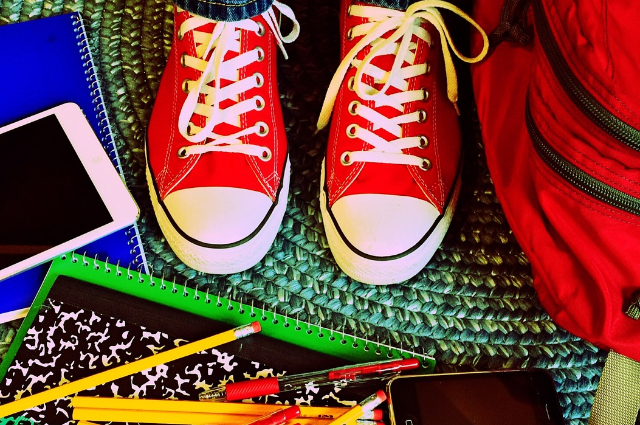
Introduction:
In the ever-changing landscape of 21st century, the ability to think creatively has become increasingly crucial for success in both academic and professional domains. High school students, in particular, stand to benefit greatly from the cultivation of creative thinking skills, as they prepare to navigate a world that demands innovation, adaptability, and problem-solving prowess.
Understanding Creative Thinking:
Before delving into specific strategies, its essential to grasp the concept of creative thinking and its significance in the educational context. Creative thinking encompasses the ability to generate ideas, approach problems from multiple perspective, and adapt to new challenges creatively. Unlike traditional academic skills that emphasize rote memorization and procedural knowledge, creative thinking is characterized by flexibility, curiosity, and a willingness to explore the unknown.
Why is creative thinking Important for high school students?
Creative thinking skills not only enhance academic performance but also prepare students for success in the workforce and beyond. in today's innovation-driven economy, employers value individuals who can think critically, solve complex problems,and innovate in response to changing circumstances. By fostering creative thinking among high school students, educators equip them with the tools and mindset needed to thrive in a dynamic and unpredictable world.
Strategies For Fostering Creative Thinking:
1. Encouraging Divergent Thinking: Divergent thinking is the ability to generate multiple solutions to a problem, explore various possibilities, and think outside the box. High school educators can promote divergent thinking:
- Providing open- ended prompts and challenges that encourage students to explore alternative solutions.
- Encouraging brainstorming sessions where students can freely express their ideas without the fear of judgment.
- Incorporating activities that stimulate creativity, such as mind mapping, free writing, and role-playing exercises.2
2. Cultivating Curiosity and Exploration: Curiosity is the fuel that drives creative thinking, inspiring students to ask questions, explore new ideas, and seek out novel experiences. Educators can nurture curiosity by:
- Creating an inquiry- based learning environment where students are encouraged to pursue their interests and explore topics in depth.
- Introducing interdisciplinary projects that encourage students to make connection across different subject areas.
- Providing access to a variety of resources, including books, articles, guest speakers, and field trips, to stimulate curiosity and exploration.
3. Embracing Failure as a Learning Opportunity: Failure is an inevitable part of the creative process, yet many students fear it as a sign of incompetence or inadequacy. Educators can help students overcome this fear by:
- Normalizing failure and reframing it as a natural and necessary part of the learning process.
- Encouraging students to view setback as opportunities for growth,learning and resilience-building.
- Providing constructive feedback that focuses on the process rather than the outcome, emphasizing effort, persistence, and creative thinking skills.
4. Fostering Collaboration and communication: Collaboration and communication communication skills are essential skills for creative thinkers, as they enable individuals to share ideas, receive feedback, and work effectively in teams. Educators can promote collaboration and communication by:
- Assigning group projects that require students to collaborate and solve problems together.
- Teaching effective communication skills, such as active listening, respectful dialogue, and persuasive argumentation.
- Providing opportunities for students to present their ideas to peers and receive constructive feedback in a supportive environment.
5. Providing Creative Challenges and Projects: Creative challenges and projects provide students with opportunities to apply their creative thinking skills in real-world contexts. Educators can design creative projects by:
- Allowing students to choose topics and formats that align with their interests and strengths.
- Encouraging students to explore diverse perspectives, experiment with different media, and take risks in their creative endeavors.
- Providing guidance and support throughout the project development process while allowing students to take ownership of their learning.
6. Integrating Technology and Innovation: Technology can be a powerful tool for fostering creative thinking among high school students, providing them with access to resources, tools and platforms that facilitate experimentation and innovation. Educators can leverage technology by:
- Incorporating digital tools and apps that support creativity, such as graphic design software, coding platforms, and multimedia production tools.
- Introducing students to emerging technologies, such as virtual reality, artificial intelligence, and 3D printing to inspire innovative thinking and problem-solving.
- Encouraging students to use technology to collaborate with peers, share their creative work, and showcase their ideas to a wider audience.
7. Cultivating a Growth Mindset: A growth mindset is essential for fostering creative thinking, as it encourages students to embrace challenges, persist in the face of obstacles, and believe in their ability to improve overtime. Educators can cultivate a growth mindset by:
- Providing praise and recognition for effort, perseverance, and creative thinking skills, rather than innate talent or intelligence.
- Teaching students about the neuroscience of learning and the plasticity of the brain, emphasizing that intelligence and abilities can be developed through practice and learning.
- Encouraging students to set goals, reflect on their progress, and celebrate their achievements as they continue to grow and develop as creative thinkers.
Conclusion:
Fostering creative thinking among high school students is essential for preparing them to thrive in a rapidly changing world. By implementing strategies that promote divergent thinking, curiosity, resilience, collaboration, and innovation, educators can empower students to unleash their creative potential and become lifelong learners and problem solvers. By nurturing creative minds, we can cultivate a generation of innovators, leaders, and change makers who will shape the future for the better.
